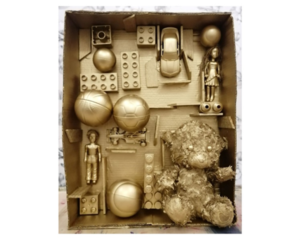Art and its various forms, play a very important role when it comes to language teaching and more specifically to teaching English as a Foreign/Second Language. Its benefits and their importance to the students’ linguistic and emotional growth and development are pivotal. At the House of English, we include all forms of art in our lessons, as all educators should, because learners tend to get easily bored, and our activities always align with their interests and developmental stages.
Art is capable of encompassing many themes and subjects. Through Art, students learn about history, geography and talk about books, authors and even, new forms of Art. There is always a specific purpose and students are acquiring language rather than just learning it.
Andrew Wright illustrated the importance of pictures in his handbook Pictures of Language Learning. He explains that “pictures have a major role to play in the development of student skills in listening and reading” and that “the pictures have motivated the students, made the subjects they are dealing with clearer, and illustrated the general idea and forms of an object or action which are particular to a culture” (Wright, 1989, p.1).
This is the reason we use a variety of different paintings when presenting topic vocabulary. Paintings have a lot to offer to students and teachers alike, as they provide meaningful context and encourage further discussion. Greek students are not often exposed to works of Art, so paintings and other forms of Art such as sculpting, photography, etc., always attract their attention and make the lesson and the target language more memorable.
In our Language School we have also created an educational framework to expose VYL to the English Language through Art, which has been adopted by over 40 Language Schools all over Greece. The lessons take place twice a week, and we do not use any coursebook.
The first session is mainly devoted to the teaching of phonics. Students are taught the first 26 sounds of the English language but not in alphabetical order. We introduce more commonly used letters such as s, c, p, t first, then we add some short vowels so as to move on to make CVC words, we continue with the less frequently used sounds and then add one more vowel at the end of each set. We also avoid teaching visually similar letters together since children may be easily confused. All letters are presented through authentic paintings or sculptures. The children are presented the new letter/sound, then they have to find the hidden letter in the painting/sculpture and mime the related action (e.g. H for Hat: Ss mime that they are wearing a Hat). Finally, students make a craft related to the word and action.
To consolidate the form and sound of the letters, students play games to recognize the sounds, such as swat the sound or light the sound (using torches), kinesthetic/Performing Arts games, and finally they are exposed to many multisensory activities to practice both form and sound.
During the first session students are also taught the topic vocabulary. The teacher presents paintings and works of Art instead of the usual flashcards.
For the purpose of this paper, we have carried out research in our school to study the efficiency of this educational framework.
A group of students was taught the topic vocabulary using paintings and works of Art, while the other groups were exposed to it using flashcards. We noticed that although the short-term results were the same in both groups, with students remembering the words during the practice and production stages, the results were different in the long run. Students who were taught the topic vocabulary through Art could recall the words better after a long period of time and had associated them with the corresponding piece of art.
This is because art, when used in teaching, enhances observation skills. Students learn to observe and process what is in front of them more effectively, which improves their cognition and memory.
The second session of the week is devoted to consolidating the taught language. Students practice and produce language through activities related to art. Examples of such activities are as follows:





In a 2019 article in the journal Trends in Neuroscience and Education, Dr. Hardiman and her colleagues described the results of a randomized controlled trial that looked at fifth-grade students who were taught science content, some using practices from arts education and others with more traditional forms of teaching. The researchers concluded that students with more limited reading skills remembered more science when they learned it using integrated arts methods.
We can easily conclude that the same applies to foreign language teaching. Art allows for elaboration and repetition, and memory is certainly enhanced through repetition. Art also enables children to engage with the material in creative ways. This is particularly beneficial for very young learners (VYLs) who have not yet acquired literacy skills in the foreign language. Art is the perfect way to introduce them to the language, as learning becomes creative and ‘visible’.
Bibliography
Hardiman, M. (2019, April) The effects of arts-integrated instruction on memory for science content,
Wright, A. (n.d.). Cambridge University Press 978-0-521-35800-2 - assets. Retrieved February 25, 2022, from https://assets.cambridge.org/97805213/58002/excerpt/9780521358002_excerpt.pdf
Facebook Post "Discover how art can transform language learning! ???????? In her latest article, Elizabeth Veliou explores the creative integration of art in teaching English, making lessons engaging and memorable for young learners. #ELT #LanguageLearning #ArtInEducation #TeachingEnglish #CreativeClassroom #YoungLearners #A

